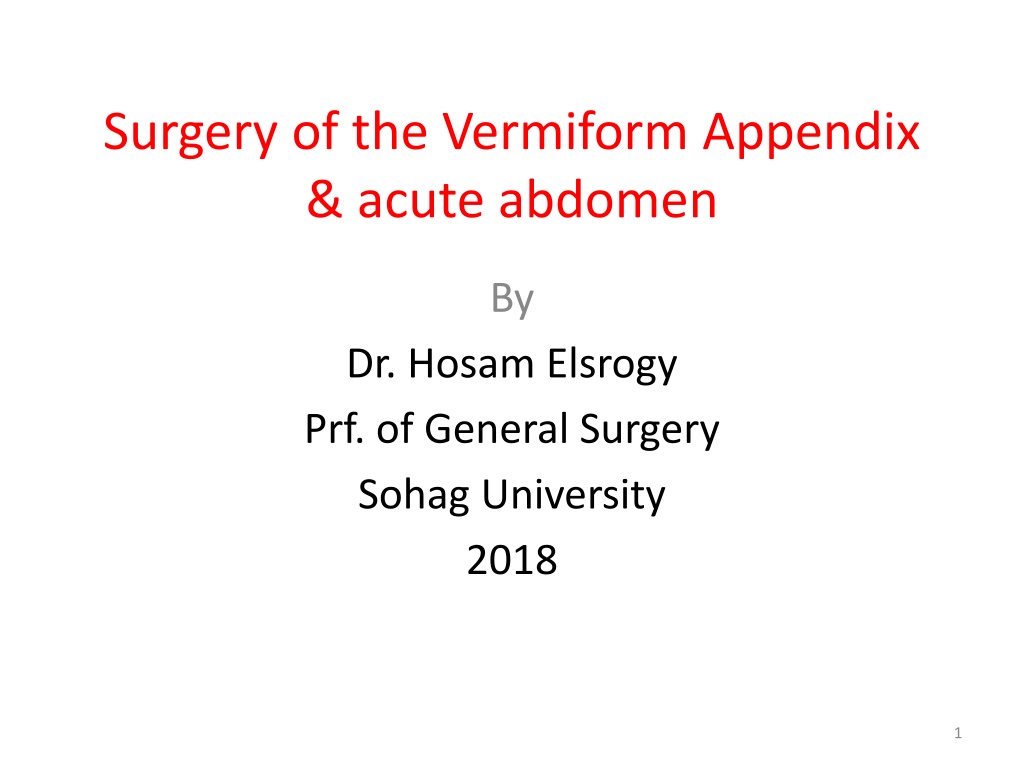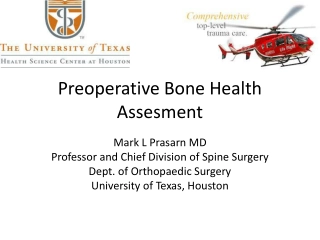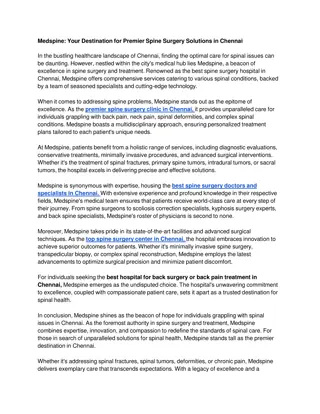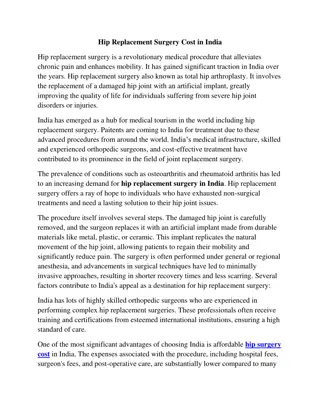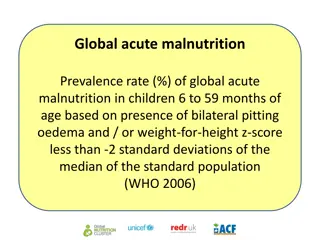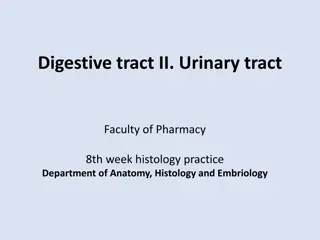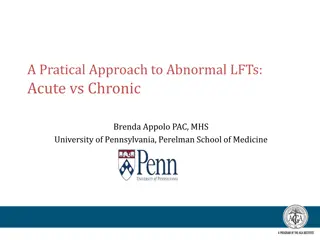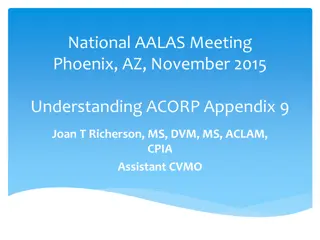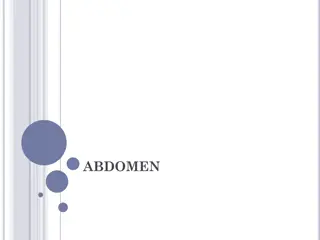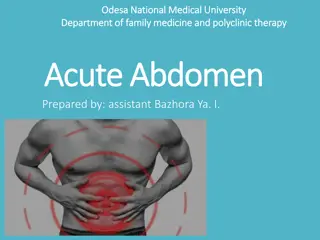Surgery of the Vermiform Appendix & acute abdomen
This publication by Dr. Hosam Elsrogy, a Professor of General Surgery at Sohag University, delves into the intricacies of performing surgery on the vermiform appendix and managing acute abdomen conditions. A comprehensive guide for medical professionals and students interested in this field of surgery. It covers essential insights, techniques, and approaches relevant to these surgical procedures, aiding in improving medical knowledge and practice.
Download Presentation

Please find below an Image/Link to download the presentation.
The content on the website is provided AS IS for your information and personal use only. It may not be sold, licensed, or shared on other websites without obtaining consent from the author.If you encounter any issues during the download, it is possible that the publisher has removed the file from their server.
You are allowed to download the files provided on this website for personal or commercial use, subject to the condition that they are used lawfully. All files are the property of their respective owners.
The content on the website is provided AS IS for your information and personal use only. It may not be sold, licensed, or shared on other websites without obtaining consent from the author.
E N D
Presentation Transcript
Surgery of the Vermiform Appendix & acute abdomen By Dr. Hosam Elsrogy Prf. of General Surgery Sohag University 2018 1
Items Introduction Surgical anatomy Inflammations of appendix acute chronic recurrent Tumours of appendix Carcinoid (argentaffinoma) 1ry adenocarcinoma Causes of acute abdomen 2
Introduction Appendix is a vestigial organ. Surgical importance-------inflammations------ clinical syndrome of acute appendicitis (AA). AA is the most common cause of acute abdomen in young adults. Appedecectomy (appendectomy) is the frequently performed urgent abdominal op. Diagnosis of AA is essentially clinical. 3
Surgical anatomy Vermiform appendix is present only in human & certain anthropoid apes. Blind muscular tube at distal end of caecum. 4 layers--------- mucosa, submucosa, musculosa & serosa. At birth, it is short & broad at its junction with caecum. By age of 2 ys------ typical tubular structure (due to differential growth of the caecum) 4
Surgical anatomy; positions of appendix Retrocaecal -------- 74% Pelvic -------- 21% Postileal -------- 5% Paracaecal -------- 2% Subcaecal -------- 1.5% Preileal --------- 1% (typical C/P) Subhepatic --------- very rare Lt. sided --------- situs inversus viscerum 5
Surgical anatomy (cont.) Position of base of the appendix is constant ------- - at the confluence of the 3 tinea coli. Mesoappendix arises from lower surface of mesentery of terminal ileum. Bl. Supply -------- appendicular a. (from lower division of ileocolic a.), it is an end a.----- thrombosis ----- gangrenous appendicitis. Accessory appendicular a. in most people. Lymph drainage ----- 4-6 lymph channels ---- ileocaecal LNs 7
Microscopic anatomy Length ------- 7.5-10 cm Irregular lumen, multiple folds of m.m lined by col. cell intestinal mucosa of colonic type. Crypts are present but not numerous----- at base of crypts ------ Argentaffin Cs (Kultschitzsky Cs) ------- carcinoid tumour. App. is the most frequent site for carcinoid ts. Submucosa ------ lymphatic aggregations or follicles especially in young adults ----- AA. 9
Acute appendicitis - Incidence One person in 6-7 develops AA at some time. Age: rare in infants Common in childhood & early adult life Peak incidence teens & early 20s after middle age Sex: Equal before puberty More in males at teenagers & young adults (3:2) After that age equal 10
AA- Incidence (cont.) AA is the commonest abdominal surgical emergency. AA is a disease of civilisation. Relatively uncommon in developing rural communities. Incidence in developing countries adopting a more-refined western-type diet 11
AA- Surgical pathology Aetiology & predisposing factors: Infective agents Obstructive agents Infective agents: Bacterial proliferation within the appendix Mixed intestestinal organisms (aerobic & anaerobic) e.g., coliforms, entercocci, bacteroides & others. Infection either: 1ry lymphoid hyperplasia. 2ry bacteria wall of appendix through epithelial erosion caused by pressure of an obstructing agent. 12
AA- Surgical pathology (cont.) Obstructing agents: 1. Faecolith (inspissated faecal material, Ca phosphates, bacteria, epithelial debris) 2. F.B. (vegetable seeds, date stones) 3. Fibrotic stricture (previous resolved AA) 4. Tumour (caecal Ca in older ages, carcinoid) 5. Intestinal parasites (thread; round & pinworms) 6. Lymphoid hyperplasia in submucosa ; viral causes 13
AA- Surgical pathology (cont.) Clinicopathological types of AA: 1. Acute appendicitis 2. Acute appendicitis with inflammatory mass 3. Acute appendicitis with generalised peritonitis 4. Mucocele of the appendix 14
AA- Surgical pathology (cont.) Early AA mucosal inflam. & lymphoid hyperplasia with patent lumen. If obstruction occurs cont. mucous sec. + inflam. exudate (pus) intraluminal pr. obstruct lymphatic drainage oedema & mucosal ulceration bact. translocation into submucosa. Fate: either Resolution (spontaneous or Antibiotic) Progress 15
AA- Surgical pathology (cont.) Progression further distension venous obstruction ischaemia of app. wall bacterial invasion through muscularis propria & submucosa AA (red, turgid appendix). Finally ischaemic necrosis gangrenous app. Common close to the tip of appendix due to blood supply or At the site of obstruction due to pressure necrosis 16
AA- Surgical pathology (cont.) Fate of gangrenous appendicitis: 1) Free bacterial contamination in peritoneal cavity generalised peritonitis intense peritoneal reaction with fluid outpouring initially clear, late purulent serosal surface of bowel is injected & flaked with clotted lymph. 2) Rapid localisation by defence mechanism (greater omentum & coils of small bowel) phlegmonous mass or paracaecal abscess if suppuration occurs. Rarely, resolution of app inflam distended mucous- filled app mucocele of the appendix. 17
AA with generalised peritonitis It is the great threat of acute appendicitis Causes of peritonitis: 1) Free migration of bacteria through ischaemic appendicular wall 2) Frank perforation of gangrenous appendix 3) Delayed perforation of appendicular abscess 18
Risk factors for perforation of appendix Extreme of age (ill-developed omentum) Immunosuppression Diabetes mellitus Faecolith obstruction Pelvic appendix (lying free in pelvis; 21%) Previous abdominal surgery pregnancy 19
AA- Clinical features Periumbilical colic (poorly localised, visceral) Pain shifts to RIF (intense, constant & localised somatic pain due to parietal peritoneal irritation) Anorexia (constant especially in children) Nausea Vomiting (1 or 2 episodes after onset of pain) History of previous similar discomfort which setteled spontaneously 20
AA- Clinical features (cont.) Typical features are present in 50%. Atypical features poorly localised somatic or visceral pain especially in: Elderly no RIF pain Pelvic appendicitis no somatic pain in ant. abd. wall suprapubic discomfort & tenesmus tenderness on PR examination 21
AA- Clinical features (cont.) Typically 2 clinical syndromes of AA: Acute catarrhal (non obstructive) appendicitis Acute obstructive appendicitis acute course abrupt onset generalised abdominal pain from start temp. may be normal & vomiting is common mimic acute intestinal obstruction 22
AA- Signs General Local Special General signs: 1) Look unwell, coated tongue & foul breath 2) Pyrexia low grade (37.2-37.7 C) absent in 20% of cases In children if > 38.5 C other cause e.g., mesenteric adenitis 1) Tackycardia 80-90 beats/ min, absent in 20% 23
AA- Signs Local signs: 1. Localised tenderness in RIF;McBurney s point 2. Muscle guarding over RIF 3. Rebound tenderness(coughing or percussion) 4. Limitation of resp. movement in lower abd. 5. Pointing sign 6. Tender PR exam on Rt side in pelvic app. 7. Cutaneous hyperaesthesia in RIF 24
AA- Signs Special signs: 1. Rovsing s sign (on deep pressure on LIF) 2. Blumberg s sign (crossed or rebound tenderness on sudden release of deep pressure on LIF) 3. Psoas sign (pain on extension of Rt. hip) 4. Obturator (Cope s) sign (pain on flexion & internal rotation of Rt. Hip in pelvic app.) 5. Straight leg raising sign 25
AA- Special features Retrocaecal appendix: Absent rigidity Lack localised deep tendern. at RIF (silent app) Deep tenderness at loin Rigidity of quadratus lumborum +ve psoas spasm 26
AA- Special features Pelvic appendix: Early diarrhoea Complete absence of abdominal rigidity Lack of tenderness at McBurney s point Deep tendern. above & to Rt. of symphysis pubis Tendern. in retrovesical or Douglas pouch on PR Psoas spasm & obturator internus muscles Frequency of micturition 27
AA- Special features Postileal appendix: Pain may not shift (missed appendix) Diarrhoea is present Ill-defined tenderness or may be present immediately to the Rt. of the umbilicus 28
AA- Special features Appendicitis in infants & young children: Rare under 36 months of age Often delayed diagnosis: Patient unable to give history High incidence of perforation Diffuse peritonitis develop rapidly due to ill- developed omentum 29
AA- Special features Appendicitis in older children: Vomiting is always Complete aversion to food No sleep during attack Absent bowel sounds in early stages Appendicitis in elderly: High incidence of gangrene & perforation Little signs due to lax abdominal walls or obesity May simulate subacute intestinal obstruction Higher mortality rates 30
AA- Special features AA in obese patients: all local signs with delay in diagnosis Technically difficult operation Consider a midline abdominal incision AA in pregnancy: AA is the most common extrauterine abd condition Frequency is one in 1500-2000 pregnancies Delay in presentation & early nonspecific symptoms High appendix late in pregnancy flank or back pain confused with pyelonephritis Foetal loss occurs in 3-5% & 35% if perforation occurs 31
D.D. of acute appendicitis & acute abdomen Children: 1) Acute gastroenteritis 2) Mesenteric lymphadenitis 3) Meckel s diverticulitis 4) Intussusception 5) Henoch-Sch nlein purpura 6) Lobar pneumonia & pleurisy 32
D.D. of acute appendicitis & acute abdomen Adults: 1) Regional enteritis (Crohn s disease) 2) Ureteric colic 3) Perforated ulcer 4) Torsion testis 5) Pancreatitis 6) Rectus sheath haematoma 33
D.D. of acute appendicitis & acute abdomen Adult females: 1) Salpingitis 2) Mittelschmerz 3) torsion/rupture of an ovarian cyst 4) Ectopic pregnsncy 5) Pyelonephritis 6) Endometriosis 34
D.D. of acute appendicitis & acute abdomen Elderly: 1) Sigmoid diverticulitis 2) Intestinal obstruction 3) Colonic carcinoma 4) Torsion appendix epiploicae 5) Mesenteric infarction 6) Aortic aneurysm 35
D.D. of acute appendicitis & acute abdomen Rare D.D.: 1) Preherpetic pain of Rt 10th&11th dorsal nerves 2) Tabetic crises 3) Spinal conditions 4) Porphyria & D.M. 5) Cyclical vomiting of infants or young children 6) Typhlitis or leukaemic ileocaecal syndrome 36
preoperative investigations in AA Routine: Full blood count urinlysis Selected cases: Pregnancy test Urea & electrolytes Supine AXR Ultrasound abdomen/pelvis 37
Ttt of acute AA appendicectomy: Conventional McBurney s incision Lanz incision Lower midline abdominal incision Rutherford Morrison s incision Retrograde appendectomy Drainage of peritoneal cavity laparoscopic 38
Problems encountered during appendicectomy A normal appendix: Careful exclusion of other possible diagnosis esp Crohn s disease, Meckel s diverticulitis, tubal or ovarian causes Remove appendix The appendix cannot be found: Mobilise the caecum& trace tinea coli Absent appendix An appendix abscess is found & appendix could not removed easily: Local peritoneal toilet & drainage of abscess I.v antibiotics Very rarely. Caecectomy or partial Rt hemicolectomy 39
AA complicating Crohns disease If caecal wall is healthy at base of appendix appendicectomy. If appendix is involved in CD conservative approach I.V corticosteroids & ststemic AB 40
Abscesses complicating AA Appendix abscess Pus within the phlegmonous appendix mass Failure of resolution of appendix mass Continued spiking pyrexia Percutaneous drainage under US or CT guide Laparotomy through a midline incision Extraperitoneal drainage Pelvic abscess Spiking pyrexia several days after appendicitis or discharge Pelvic discomfort, loose stool or tenesmus PR boggy mass in pelvis, ant. to rectum Pelvic US or CT Transrectal drainage 42
Ttt of appendix mass The standard conservative Ochsner-Sherren regimen Careful record of patient s condition Regular exam of abdomen Mark limits of the mass on the abdominal wall Nasogastric tube Intravenous fluids Systemic antibiotic therapy Record temp & pulse every 4 hrs Clinical improvement within 24-48 hrs Remove appendix usually after an interval of 6-8 weeks 43
Criteria for stopping conservative ttt of appendix mass A rising pulse rate Increasing or spreading abdominal pain Increasing size of the mass Vomiting or copious gastric aspirate 44
Neoplasms of appendix Carcinoid tumour (argentaffinoma) Arise in argentaffin tissue (Kulschitzsky Cs of crypts of Lieberkuhn) Most commonly found in appendix Found once in every 300-400 appendices 10 times more common than any other neoplasms Subacute or recurrent appendicitis Frequently involves distal third of appendox Rarely gives rise to metastases Small tumours < 2 cm appendicectomy Rt hemicolectomy if involved caecal wall, tumour is 2 cm or more or involved LN 45
Thank you 47
